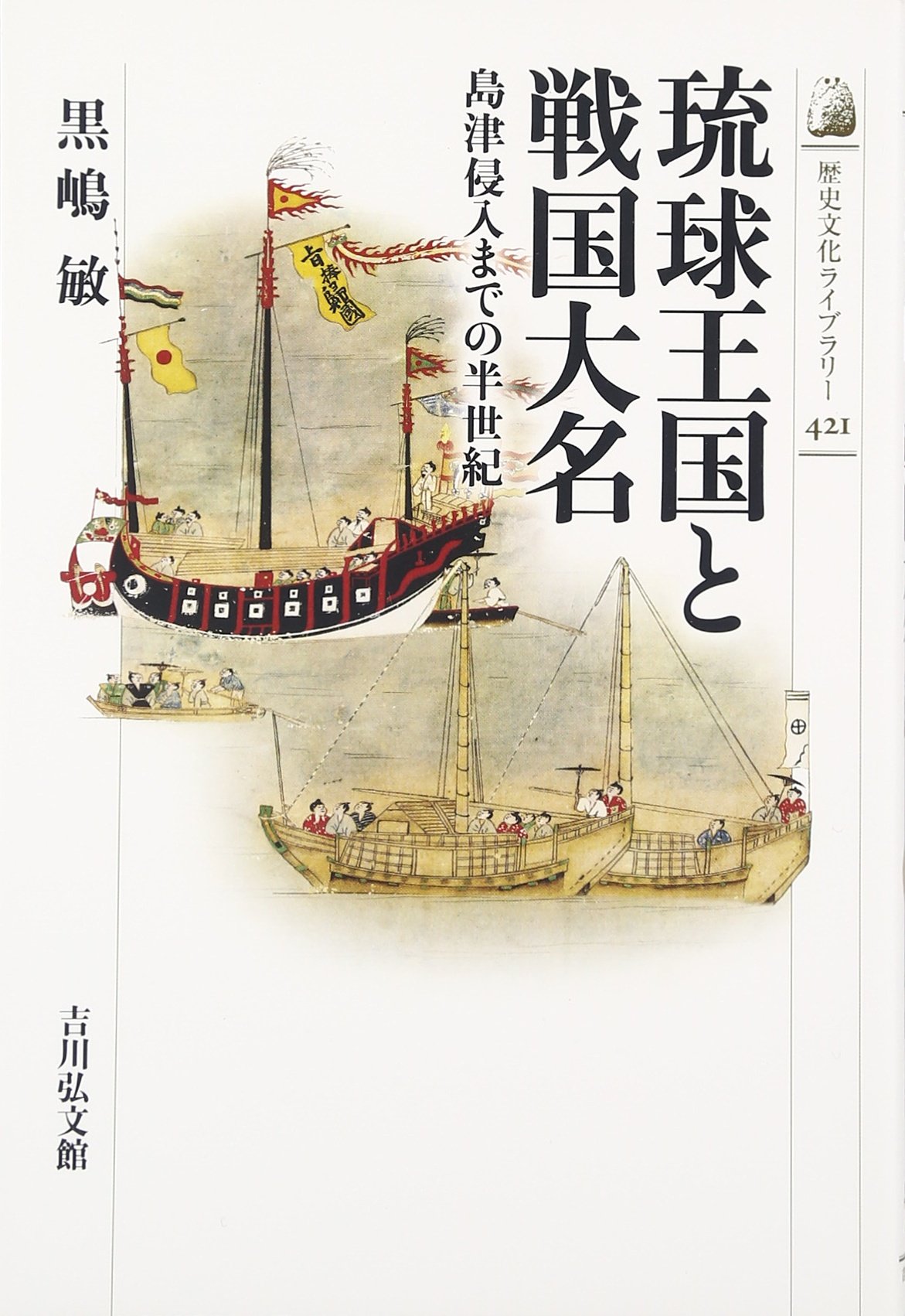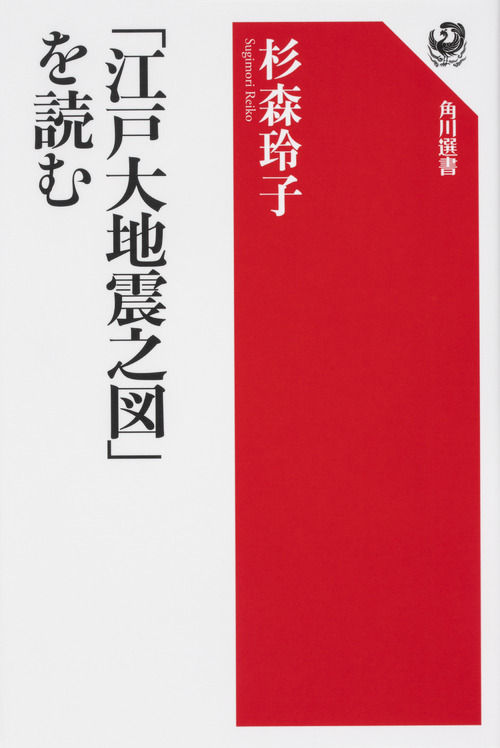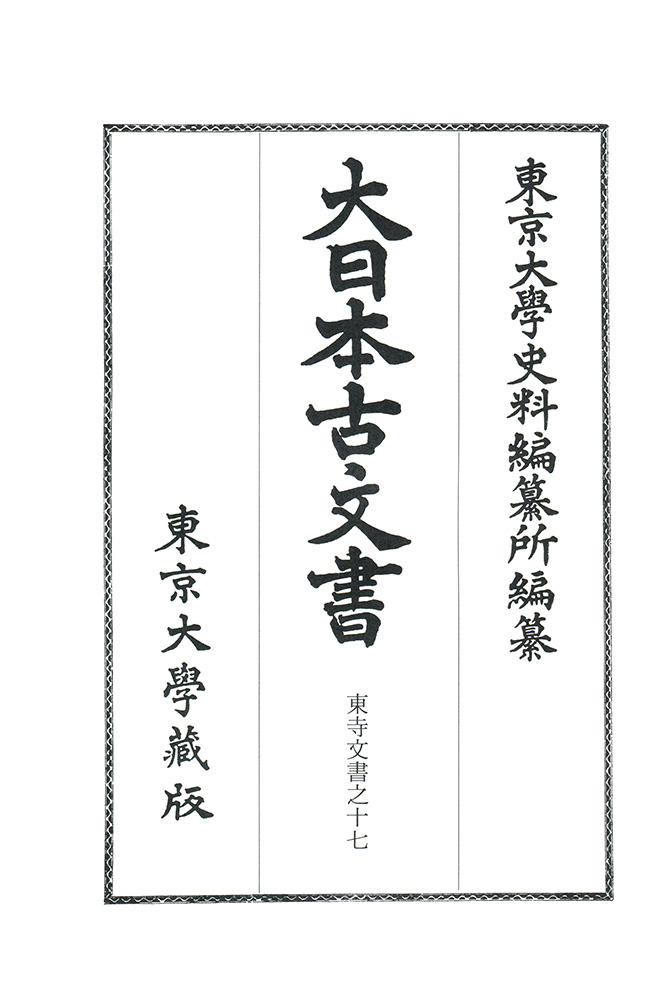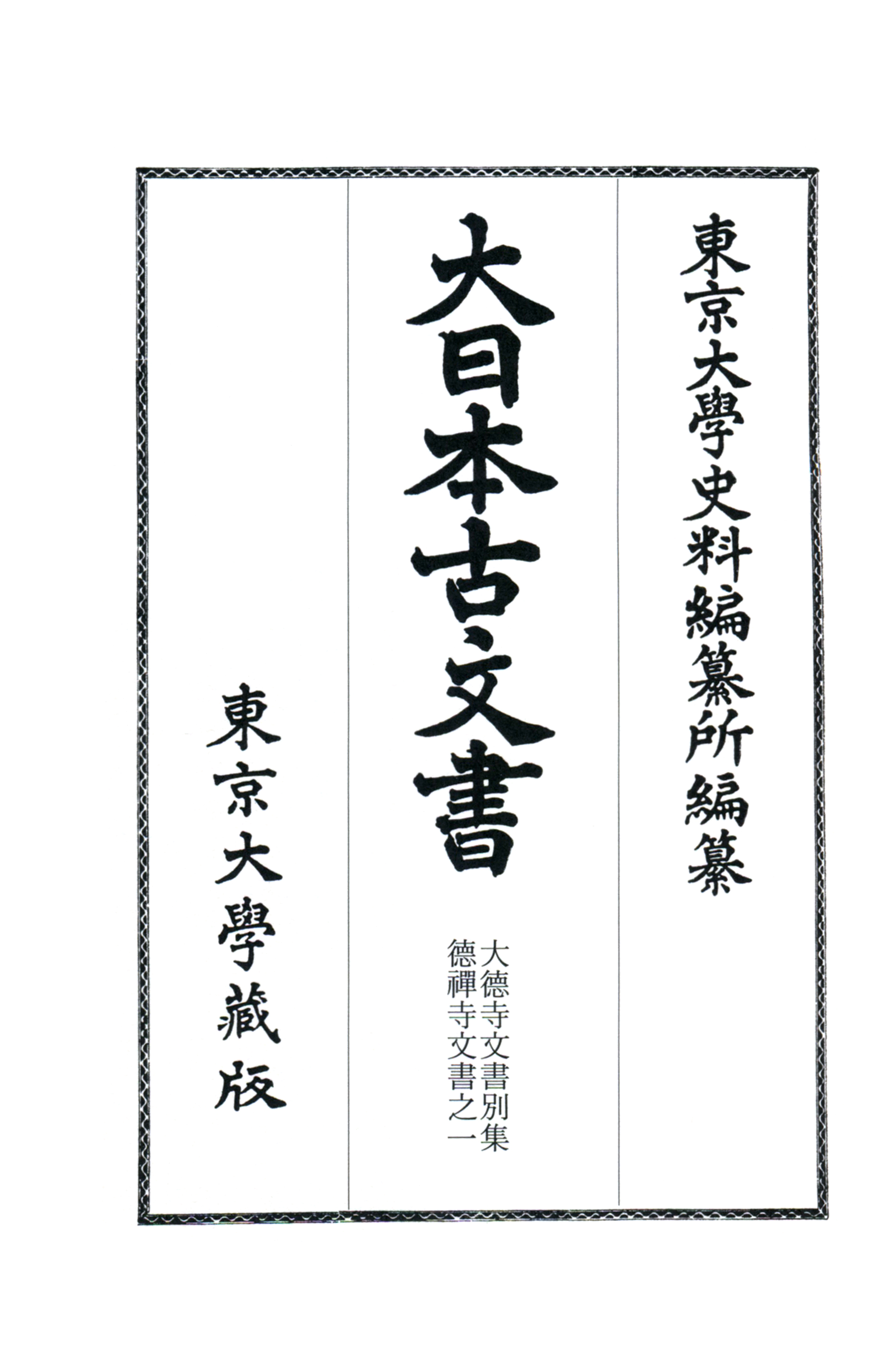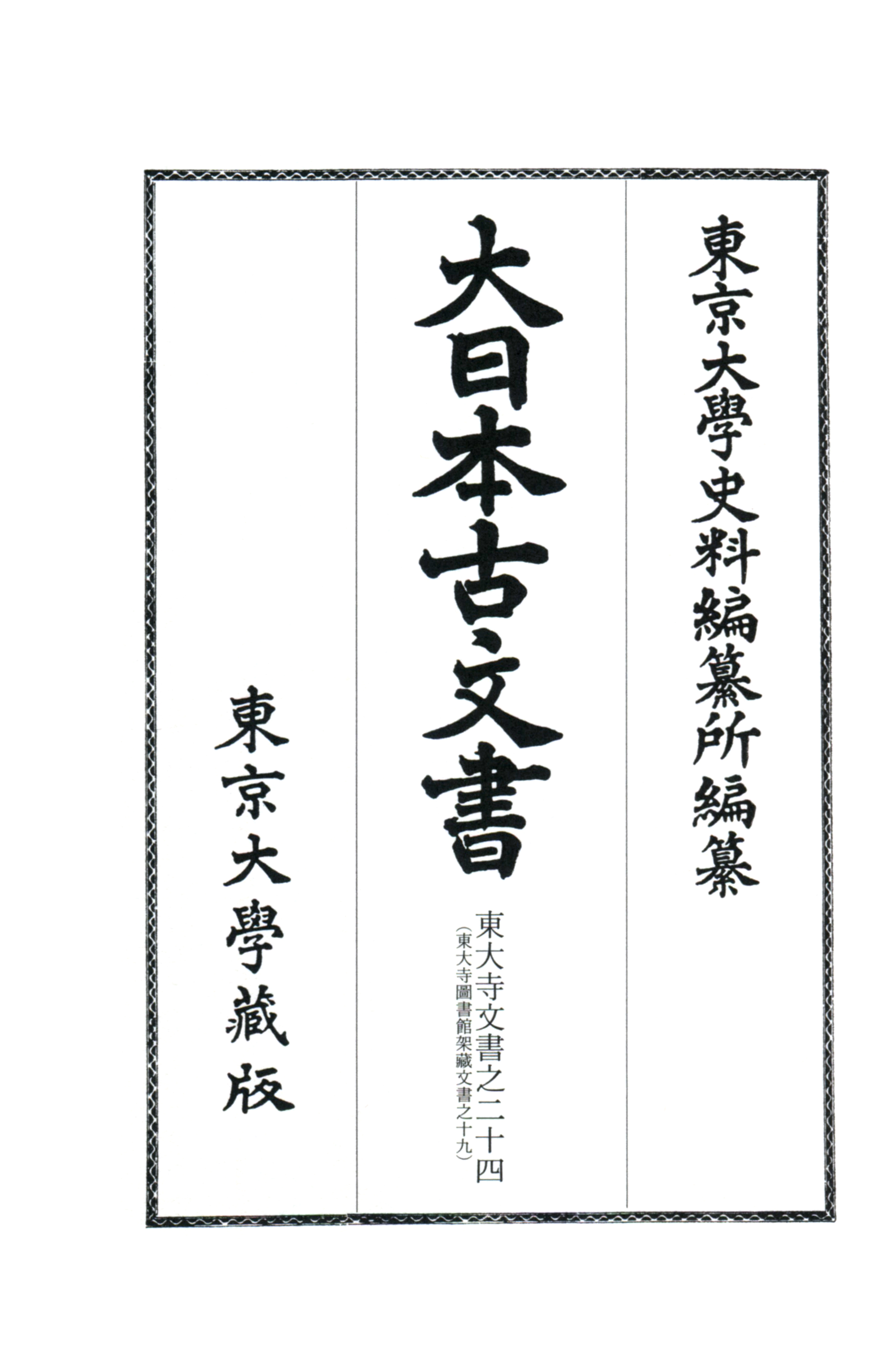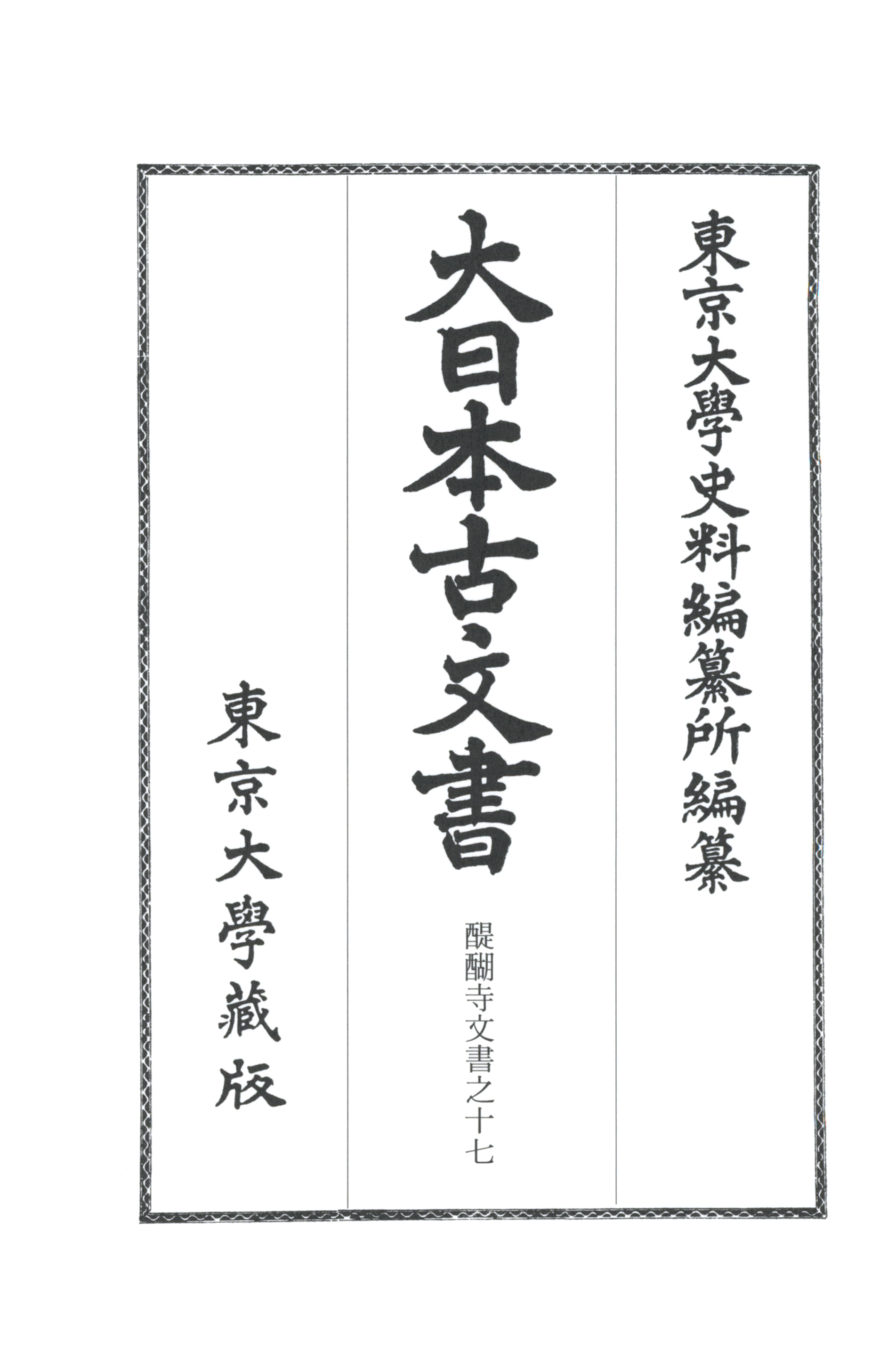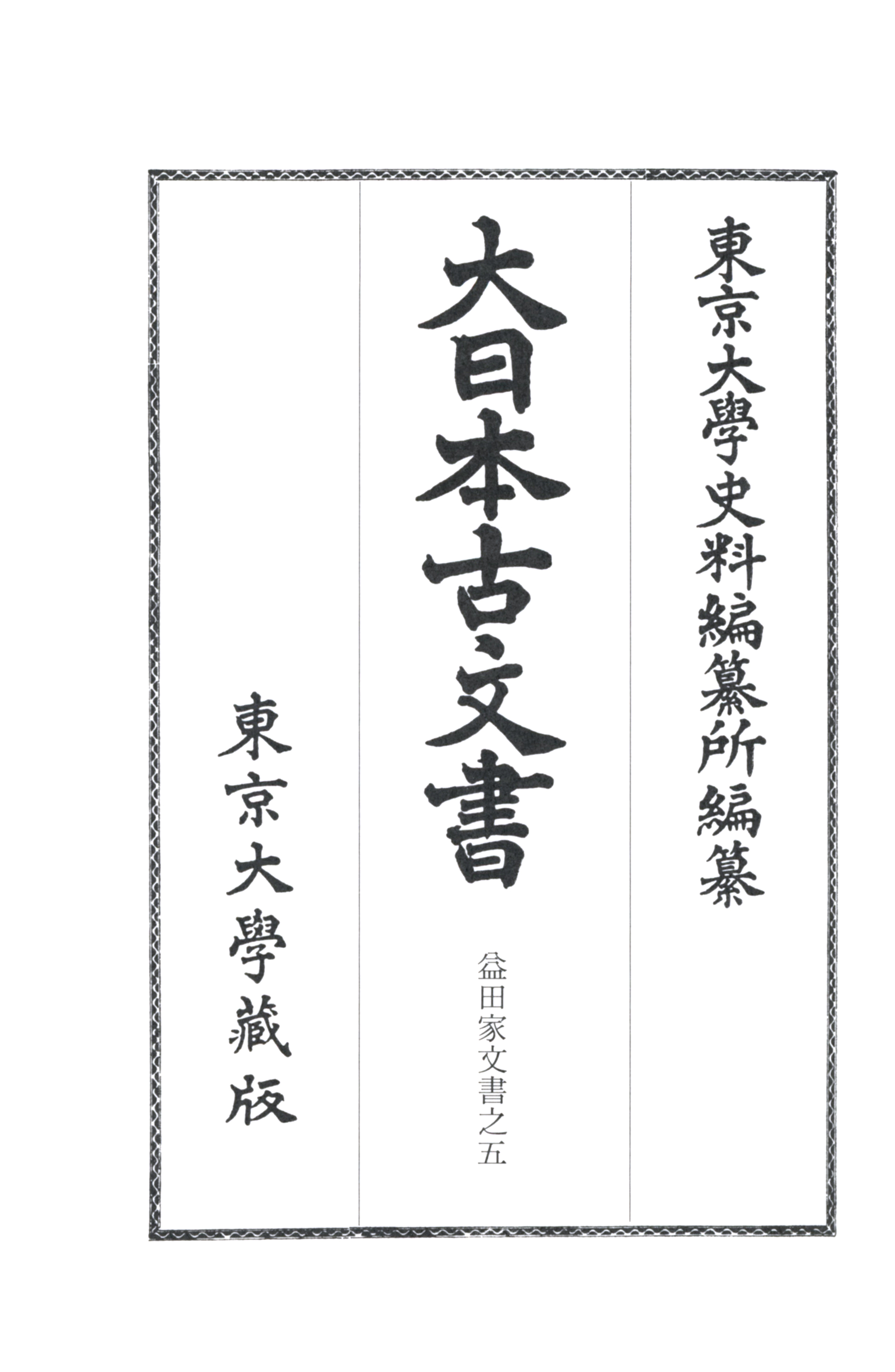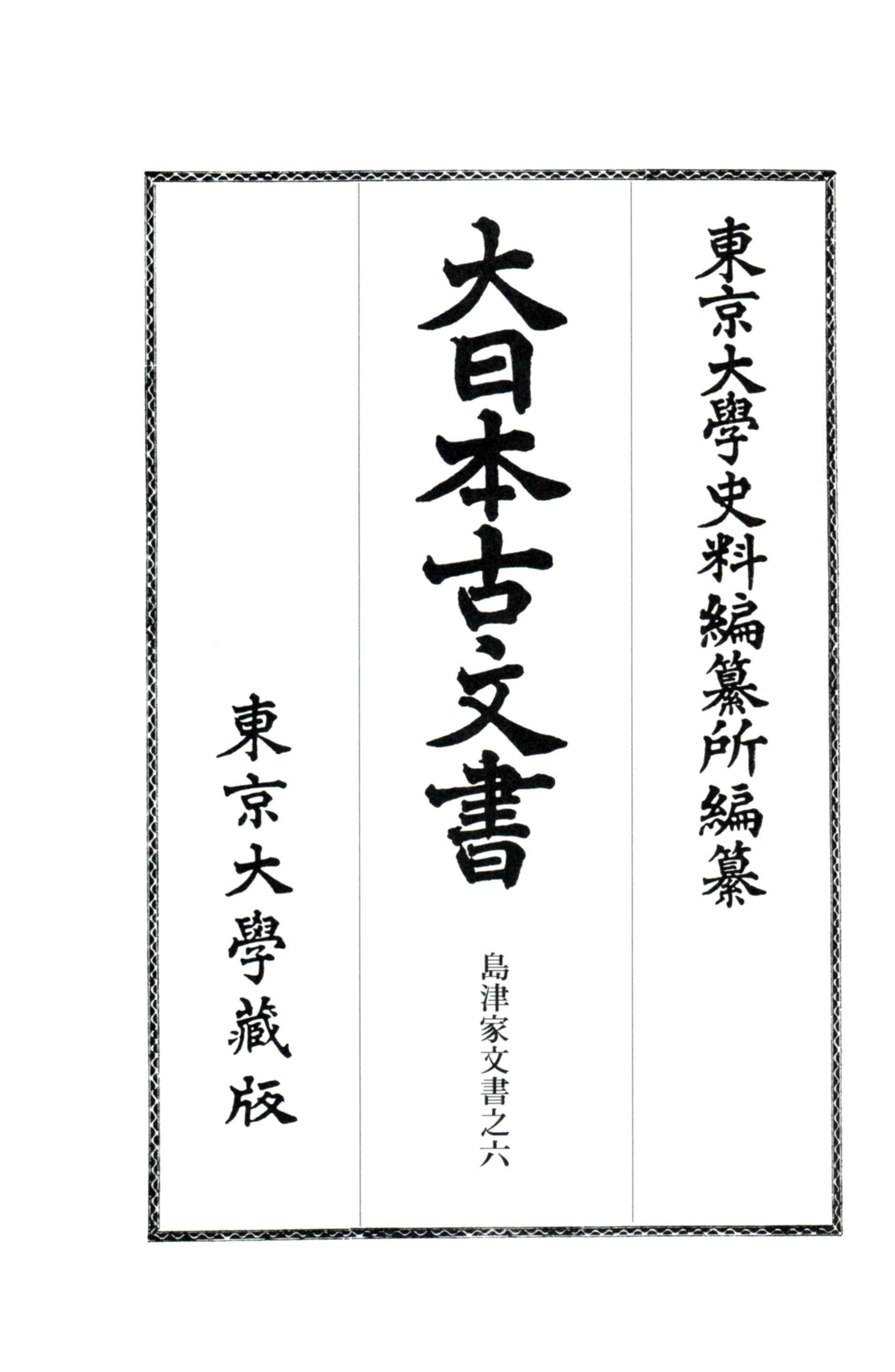
Title
Dai-Nihon Komonjo Iewake dai 16, Shimazu-ke Monjo 6 (Old Documents of Japan: Documents of the Shimazu Family, Vol. 6)
Size
418 pages, A5 format
Language
Japanese
Released
April 19, 2019
ISBN
978-4-13-091146-7
Published by
University of Tokyo Press
Book Info
See Book Availability at Library
Japanese Page
Among the many different collections of historical sources published in the series Old Documents of Japan, Documents of the Shimazu Family is a collection of documents formerly preserved by the Shimazu family, former lords of Satsuma, and now held by the Historiographical Institute at the University of Tokyo. Representing as they do the finest corpus of documents belonging to a former warrior family, they have been designated a National Treasure. Among the handscrolls in this collection bearing the title “Go-monjo” on their outer cover, the present volume contains 15 fascicles (fascicles 17–32), corresponding to fascicles 12–27 from the time of Shimazu Iehisa, and they cover the period from 1608, not long after the establishment of the Edo shogunate, to 1637, during the rule of the third shogun, Tokugawa Iemitsu.
Tokugawa Ieyasu, the first shogun of the Tokugawa shogunate, resigned from office after only two years in favour of his son, Tokugawa Hidetada, and rebuilt Sunpu castle, where he then retired. But he continued to wield power as retired (and de facto) shogun, and it is evident from some of the documents included in this volume that he used retainers such as Honda Masazumi and Yamaguchi Naotomo to give various instructions to the Shimazu family. For example, after having moved to Sunpu, Ieyasu gave orders to Shimazu Iehisa, who expressed wishes to visit him at Sunpu, that there was no need for him to come until he received instructions to do so. Discovering details such as this is one of the real thrills of the study of original documents.
On the 23rd of the ninth month of 1614 a letter arrived from Ōno Harunaga, one of Toyotomi Hideyori’s retainers at Osaka Castle, asking the Shimazu to come and fight alongside Hideyori, who haddecided to confront Ieyasu. Whereas most of the letters included in the handscroll containing this letter are originals, this letter is a copy. It is to be surmised that the Shimazu informed Ieyasu of the contents of Harunaga’s letter and, when doing so, also submitted the original letter. Even in the case of materials that have survived only in the form of copies, it is possible to infer the recipient’s actions.
A document from 1616 (Genna 2/8/8) jointly signed by senior statesmen of the Tokugawa shogunate is important in that it gives an indication of the direction taken by the second shogun Hidetada in foreign relations after his father Ieyasu’s death. It prohibits the docking of Portuguese and British ships within the territory of Satsuma domain and orders them to be redirected to Nagasaki and Hirado. However, ships from China were permitted to dock and trade in Satsuma because they had no connections with Christianity. The treatment of foreign vessels is generally discussed in the context of the regulation of trade, but this document shows that in fact it had close connections with Christianity. In this fashion, the 369 documents contained in this volume are indispensable for studying the shogunate and its relations with domains in the early Edo period.
(Written by YAMAMOTO Hirofumi, Professor, Historiographical Institute / 2020)



 Find a book
Find a book


